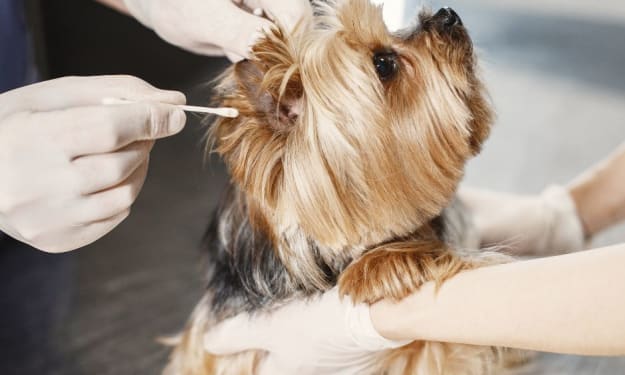Can Dogs Eat Chocolate? A Definitive Guide for Concerned Pet Owners
Understanding the Dangers of Chocolate for Dogs and How to Keep Your Canine Companion Safe

Chocolate is one of the world’s most beloved treats. As humans, we relish the rich sweet taste of chocolate. So it's natural to wonder - can dogs eat chocolate too?
Unfortunately, the answer is no. Chocolate contains substances called methylxanthines that are toxic to dogs. Even small amounts can be dangerous, even fatal.
While completely avoiding chocolate is ideal, accidents happen. So it’s important for pet owners to understand the risks, recognize symptoms of chocolate poisoning, and know how to respond properly. Let’s explore everything you need to know about dogs and chocolate.
Why is Chocolate Toxic to Dogs?
Chocolate contains caffeinated compounds called methylxanthines. For dogs, they can be deadly. Here’s what you need to know:
- Theobromine: Dogs cannot effectively metabolize this stimulant found in cocoa beans. It builds up to toxic levels in their systems.
- Caffeine: Dogs are far more sensitive to caffeine than humans. Too much can be extremely dangerous.
- Cocoa butter: Highly concentrated fat can lead to vomiting and diarrhea.
Even small amounts of these substances are risky for dogs. The darker the chocolate, the more toxic it generally is.
How Much Chocolate is Dangerous?
The amount of chocolate that could poison a dog depends on factors like:
- Size of dog: Toxic dose is lower for smaller dogs based on weight.
- Cocoa concentration: Dark chocolate and baking chocolate contain more methylxanthines.
- Serving size: More chocolate equals higher risk.
As a general guideline from the Pet Poison Helpline:
- 1 ounce of milk chocolate per 1 pound of dog weight could cause symptoms.
- 1 ounce of semi-sweet chocolate per 3 pounds of dog weight could be toxic.
- Just 1 ounce of baker's chocolate per 9 pounds of dog weight may be deadly.
These amounts are estimates only, but illustrate how quickly chocolate can become dangerous for dogs. When in doubt, seek veterinary advice.
Signs of Chocolate Poisoning in Dogs
Chocolate impacts each dog differently based on the type and amount consumed. But here are some common symptoms:
- Vomiting, diarrhea, excessive thirst or urination. These occur within 6-12 hours.
- Abnormal heart rate, tremors, seizures. These may begin within 24 hours or more.
- Breathing issues, irregular heart rhythms, fever, muscle rigidity. These are life-threatening signs.
- Coma, cyanosis (blue gums), collapse, death. Emergency care is critical at this stage.
The sooner symptoms appear, the larger the toxic exposure was. Call your vet or emergency clinic immediately if your dog shows any concerning signs.
What to Do if Your Dog Eats Chocolate
If your dog gets into some chocolate, quick action can help prevent serious harm:
- Determine type and quantity eaten if possible. Details help vets assess risk.
- Call your vet or poison control right away even if your dog seems fine. Get guidance on next steps.
- Induce vomiting if advised by your vet and soon after ingestion. Use 3% hydrogen peroxide based on dog’s weight.
- Visit the vet for examination and continued monitoring. Treatment may include activated charcoal, IV fluids, anticonvulsants for seizures, etc.
- Provide excellent supportive care with rest, fluids, and close supervision. Watch for concerning symptoms.
The earlier chocolate is removed from a dog's system, the better the outcome. But prolonged monitoring and treatment may still be required.
Can Any Type of Chocolate Be Safe?
Ideally, dogs should never consume chocolate in any amount. However, small nibbles of low-risk chocolate are less likely to cause issues:
White chocolate has lower methylxanthine concentrations. But it still presents some risk, especially in large amounts.
Milk chocolate in very small, infrequent amounts may be tolerated, but can still be dangerous.
Dark chocolate, cocoa powder, baking chocolate should be completely avoided - these are the most toxic forms.
While some authorities suggest calculating “safe” chocolate doses for dogs based on weight, there are too many variables. It's best never to offer chocolate deliberately.
Preventing Chocolate Exposure in Dogs
Since even small amounts carry risk, prevention is key. Here are some tips to keep your dog safe:
- Store chocolate carefully out of your dog's reach, even temporarily.
- Avoid leaving chocolate unattended, like on counters or low tables.
- Make sure kids know not to share chocolate with the dog.
- Secure trash cans containing chocolate packaging or leftovers.
- Keep holiday chocolate gifts and Valentine's candy away from dogs.
- When cooking or baking with chocolate, keep dogs outside of the kitchen.
- Opt for pet-friendly carob or yogurt-based treats instead of chocolate.
- Teach your dog the “leave it” command if they attempt to eat chocolate.
Take every precaution to limit access. Dogs don't understand chocolate’s dangers. Prevention and vigilance are a dog owner's best tools.
What About Chocolate Designed for Dogs?
Some specialty treats use carob or other substitutes instead of chocolate. However, risks remain:
- Cross-contamination: Even “chocolate” made without cocoa may be at risk for theobromine exposure during manufacturing in facilities that also use real chocolate.
- Misleading labels: Some products labeled “chocolate” still contain cocoa. Carefully read all ingredients rather than relying on marketing terms.
- Individual sensitivity: Even dogs eating dog-safe chocolate could have allergic reactions.
Your best bet is choosing non-chocolate treats specifically formulated to be safe and healthy for dogs. Why take the risk?
Conclusion
Chocolate contains toxic compounds dangerous to dogs - it should be kept far away from their reach. While rarely a small amount causes extreme reactions, it's impossible to predict risk. Methylxanthines build up over time with repeated exposure. The safest approach is avoiding chocolate altogether and enjoying plenty of dog-friendly treats instead!
About the Creator
My Dogs Eat
I am a passionate dog enthusiast with many years of experience dedicated to researching and writing about canine nutrition and well-being. I am actively engaged in maintaining a well-received blog that educates dog owners About dog food






Comments
There are no comments for this story
Be the first to respond and start the conversation.